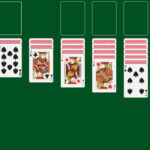Dress up games have long captivated players of all ages, offering a unique blend of creativity and self-expression. Originating from traditional playthings, these games have evolved into digital platforms that attract a diverse audience, from young children to fashion enthusiasts. The journey of dress up games reflects a rich history that intertwines culture, technology, and personal style, making them a fascinating subject to explore.
In this overview, we will delve into the various types of dress up games, highlighting their unique mechanics and features. From fantasy realms to high-fashion runways, each genre presents its own charm and appeal. Additionally, we’ll discuss the cultural significance and psychological benefits these games bring to players, shedding light on how they contribute to developing one’s fashion sense and personal identity.
Overview of Dress Up Games
Dress up games have captivated audiences for decades, offering players the chance to express their creativity and style through virtual avatars. These games allow users to combine various clothing items, accessories, and makeup options to create unique looks. The origins of dress up games can be traced back to paper dolls in the 19th century, where children would cut out clothing pieces to dress their dolls. This playful activity laid the groundwork for future iterations of dress up games, evolving into digital formats that are now widely accessible.
The evolution of dress up games from traditional to digital formats reflects advancements in technology and changes in consumer preferences. Initially, these games were simple physical toys, but with the rise of computers and the internet, they transitioned into interactive experiences. Digital dress up games now incorporate vibrant graphics, animated characters, and expansive customization options. Players can create personas ranging from fashionistas to fantasy characters, showcasing their tastes and preferences in a virtual setting. The accessibility of mobile devices has further popularized these games, making them more appealing to a broader audience.
Target Audience and Demographic Trends
The target audience for dress up games primarily includes children and tweens, but the demographic has gradually expanded to include teenagers and adults as well. This broad age range reflects a growing interest in fashion, self-expression, and digital creativity across various age groups. As these games continue to evolve, they attract players from different cultural backgrounds and interests.
Key demographic trends shaping the dress up games community include:
- Increased Female Participation: Historically, dress up games have been predominantly favored by girls. However, recent trends show a growing number of male players engaging with these games, particularly in contexts that emphasize character customization in role-playing games.
- Social Connectivity: Many dress up games now incorporate social features, allowing players to share their creations, participate in competitions, and collaborate with friends. This social aspect appeals to a younger audience that values interaction and community.
- Diverse Themes and Genres: The rise of themed dress up games—such as those based on popular movies, anime, or cultural events—has attracted a more varied audience. Players are increasingly drawn to games that resonate with their personal interests and cultural backgrounds.
The digital landscape of dress up games continues to evolve, with new platforms and technologies emerging. As augmented reality (AR) and virtual reality (VR) become more prevalent, the potential for immersive dress up experiences grows, further broadening the appeal of these games.
“Digital dress up games are not just about fashion; they are a gateway for self-expression and creativity.”
Types of Dress Up Games
Dress up games have evolved into a multifaceted genre that appeals to a wide range of players. From whimsical fantasy worlds to chic fashion runways, the diversity in dress up games allows players to express their creativity and personal style. This exploration of various genres highlights the defining characteristics and unique mechanics that set each category apart.
Fantasy Dress Up Games
Fantasy dress up games transport players to magical realms where the possibilities for character creation are limitless. These games often feature mythical creatures, enchanted landscapes, and elaborate costumes that reflect the fantastical themes. Players can customize characters with items like wings, crowns, and mystical accessories, enhancing the immersive experience.
A popular example is “Dress Up Princess,” where players design outfits for various princess characters, incorporating elements like flowing gowns and magical artifacts. The game’s vibrant art style and enchanting soundtracks contribute to a whimsical atmosphere that captures the essence of fantasy.
Fashion Dress Up Games
Fashion dress up games focus on contemporary styles and trends, allowing players to experiment with clothing inspired by real-life fashion. These games often feature high-quality graphics and a wide selection of outfits, accessories, and hairstyles that reflect current trends in the fashion industry. Players can mix and match items to create chic ensembles suitable for events like red carpet appearances or casual outings.
“Style Me Girl” is a prime example of a fashion dress up game, offering players the chance to dress models for various occasions. With regular updates featuring the latest fashion trends, it keeps players engaged and connected to the ever-changing world of fashion.
Cosplay Dress Up Games
Cosplay dress up games cater to fans of anime, video games, and pop culture, allowing players to recreate their favorite characters. These games emphasize accuracy and detail in character customization, providing a plethora of costumes and accessories that align with specific franchises. Players can showcase their creativity by designing outfits for well-known characters or inventing original looks inspired by their favorite series.
An excellent illustration of this genre is “Cosplay Dress Up,” a game that enables players to dress characters from popular anime and video games. The game includes detailed customization options, ensuring that fans can represent their favorite characters authentically.
Mechanics and Features of Dress Up Games
The mechanics and features of dress up games can vary widely, influencing the overall gameplay experience. Key characteristics that define the different types include:
– Customization Options: The extent and variety of clothing, accessories, and hairstyles available for players to choose from.
– Visual Appeal: The art style and graphics that enhance the immersive quality of the game, making the experience visually engaging.
– Theme and Setting: Each genre’s theme can drastically affect the game’s atmosphere, from whimsical fantasy landscapes to chic urban settings.
– Interactivity and Sharing: Some games incorporate social elements, allowing players to share their designs with friends or participate in competitions.
These features create a diverse landscape of dress up games, each offering unique experiences tailored to different interests and preferences. Players can find joy in customizing their characters, whether they prefer a magical fantasy realm, the latest fashion trends, or iconic cosplay representations.
The Impact of Dress Up Games
Dress up games have transcended their origins as mere entertainment to become significant cultural phenomena in today’s society. These games not only create a playful environment for users but also contribute richly to the discourse around identity, creativity, and fashion. As players engage in these virtual experiences, they explore personal expression and societal norms, shaping their perceptions of self and style.
Cultural Significance of Dress Up Games
Dress up games hold considerable cultural significance as they reflect and often challenge societal norms around beauty and fashion. These games allow users, particularly children and teenagers, to engage with diverse representations of gender and ethnicity. This exposure fosters inclusivity and promotes understanding of different cultures. Furthermore, as fashion trends are rapidly disseminated through social media, dress up games serve as a platform where players can experiment with various styles, mirroring real-world fashion dynamics.
Psychological Benefits of Engaging with Dress Up Games
Engaging with dress up games provides numerous psychological benefits, notably fostering creativity and self-expression. Players are encouraged to imagine and create their unique avatars, which can result in enhanced creative thinking. These games allow individuals to explore different facets of their identities in a safe space, often leading to increased self-esteem and confidence. The act of choosing outfits can also serve as a form of escapism, helping players to relax and enjoy the process of creation.
“Creativity is intelligence having fun.” – Albert Einstein
Development of Fashion Sense and Personal Style
Dress up games play an essential role in developing players’ fashion sense and personal style. By interacting with a wide array of clothing options and accessories, players gain insights into color coordination, layering techniques, and current fashion trends. This engagement not only enhances their aesthetic understanding but also encourages them to make conscious choices about their real-life wardrobes.
Players often replicate styles seen in these games in their everyday attire, showcasing how virtual experiences can influence actual fashion decisions. For instance, trends like pastel colors or vintage aesthetics often gain popularity through gameplay interactions before they hit mainstream fashion. In this way, dress up games not only empower players to express themselves but also help them cultivate their unique style, reflecting a blend of virtual inspiration and personal taste.

